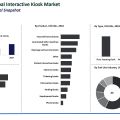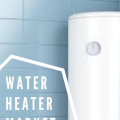TMR projects 6.2% CAGR for global medical nutrition market revenue over 2018-2027
Transparency Market Research (TMR) delivers key insights on the global Medical Nutrition market in its upcoming outlook titled, “Medical Nutrition Market: Global Industry Analysis, Size, Share, Growth, Trends and Forecast 2018-2027”. In terms of value, the global medical nutrition market is projected to register a healthy CAGR of 6.2% during the forecast period due to various factors, regarding which TMR offers vital insights in detail.
The increasing aging population is now recognized as a global issue of importance. Changes in lifestyle have resulted in rapid aging amongst the population, increasing the prevalence of various diseases. The total aging population (over 65 years) recorded substantial growth in the past few decades - from 9.2% in 1990 to 11.7% in 2013. The number of older individuals is expected to grow from 841 Mn in 2013 to more than 2 Bn in 2050, as per the World Population Report.
Request a Sample-
https://www.transparencymarketresearch.com/sample/sample.php?flag=S&rep_id=1704
Increasing Adoption of Home Parenteral Medical Nutrition Therapies
Around two-thirds of general and acute hospital beds are used by the geriatric population aged over 65 years, and people over 75 years old have longer stays. The burden of the geriatric population influences the demand and supply of nutritional food to this population and is a major contributor to the medical nutrition market. The prevalence of malnutrition in Europe and North America is 1-15% in non- institutionalized elder population, 25-60% for older adults in geriatric care facilities, and 35-60% in older adults in hospitals according medical research sources.
The rising use of home parenteral medical nutrition therapy by the geriatric population with chronic illnesses such as diabetes, cancer, and AIDS is anticipated to boost market growth. Furthermore, the geriatric population is more prone to diseases such as nervous disorders, Parkinson’s, diabetes, and organ system failure. Such patients suffer from restrictive food ingestion, and require parenteral medical nutrition feeding to maintain their nutritional levels.
Request for covid19 impact analysis –
https://www.transparencymarketresearch.com/sample/sample.php?flag=covid19&rep_id=1704
Parenteral medical nutrition administration demands regular assessment and monitoring in order to avoid complications or side effects. Inappropriate usage of this medical nutrition maximizes the potential risk of adverse events such as re-feeding syndrome, particulate contamination, catheter infections, and liver dysfunction for the patients undergoing the medical nutrition therapy. Catheter-related bloodstream infection (CRBSI) is a grave complication among patients and requires frequent and expensive parenteral medical nutrition therapy. An article published by the American Society for Nutrition in 2014 also indicated that, long-term parenteral medical nutrition therapy significantly increases the risk of liver disease and metabolic complications in patients.
Another study published by the University Health Network also states about the complications arising in the home parenteral medical nutrition therapy while treating the metabolic bone disease in patients. Moreover, problems such as allergic reactions, shortness of breath, unexplained weight gain, muscle pain, weakness, and loss of appetite are more common among patients undergoing parenteral medical nutrition therapy. These complications/side-effects are expected to restrain the medical nutrition market growth.
Buy now- https://www.transparencymarketresearch.com/checkout.php?rep_id=1704<ype=S
Higher Market Attractiveness of North America & Europe
This report covers trends driving each segment and offers analysis and insights of the potential of the medical nutrition market in specific regions. North America is expected to register high growth rates between 2018 and 2027 and is also expected to remain the largest market through 2027. According to market attractiveness, North America and Europe are a relative more attractive markets in the medical nutrition market. On the basis of product type, the medical nutrition market is segmented as standard formula and specialized formula. Other segments include flavor, indication, distribution channel and end user. The indication segment is further sub segmented as enteral and parenteral nutrition.
Detailed profiles of the providers are also included in the scope of the report to evaluate their long-term and short-term strategies, key offerings and recent developments in the medical nutrition space. Medical Nutrition key players include NUTRICIÓN MÉDICA SL, Meiji Holdings Co., Ltd., Medtrition Inc., Baxter International Inc., B. Braun Melsungen AG., Fresenius Kabi AG, Danone Nutricia, Nestlé S.A., LLC, Otsuka Holdings Co., Ltd. (Parent of Otsuka Pharmaceutical) Europe Ltd. and Abbott Laboratories amongst others.
Companies in the Medical Nutrition market have increasingly shifted gears with wide application of digital technology across the continuum, from raw material sourcing to manufacturing to generation of final output, to warehousing to final distribution operations. Among the various affects, the market is witnessing new growth economics due to thinning of line between specialty and commodity businesses that are associated with the larger ecosystem. At the same time, new growth parameters are being vigorously being debated as industry stakeholders put greater emphasis on the circular economy processes.
More Trending Report-







